2 July, 2025
0 Comments
2 categories
📘 DBMS (Database Management System) Tutorial – GoNextRole
A DBMS, or Database Management System, is software that allows users to create, manage, and interact with databases.
✅ What is DBMS?
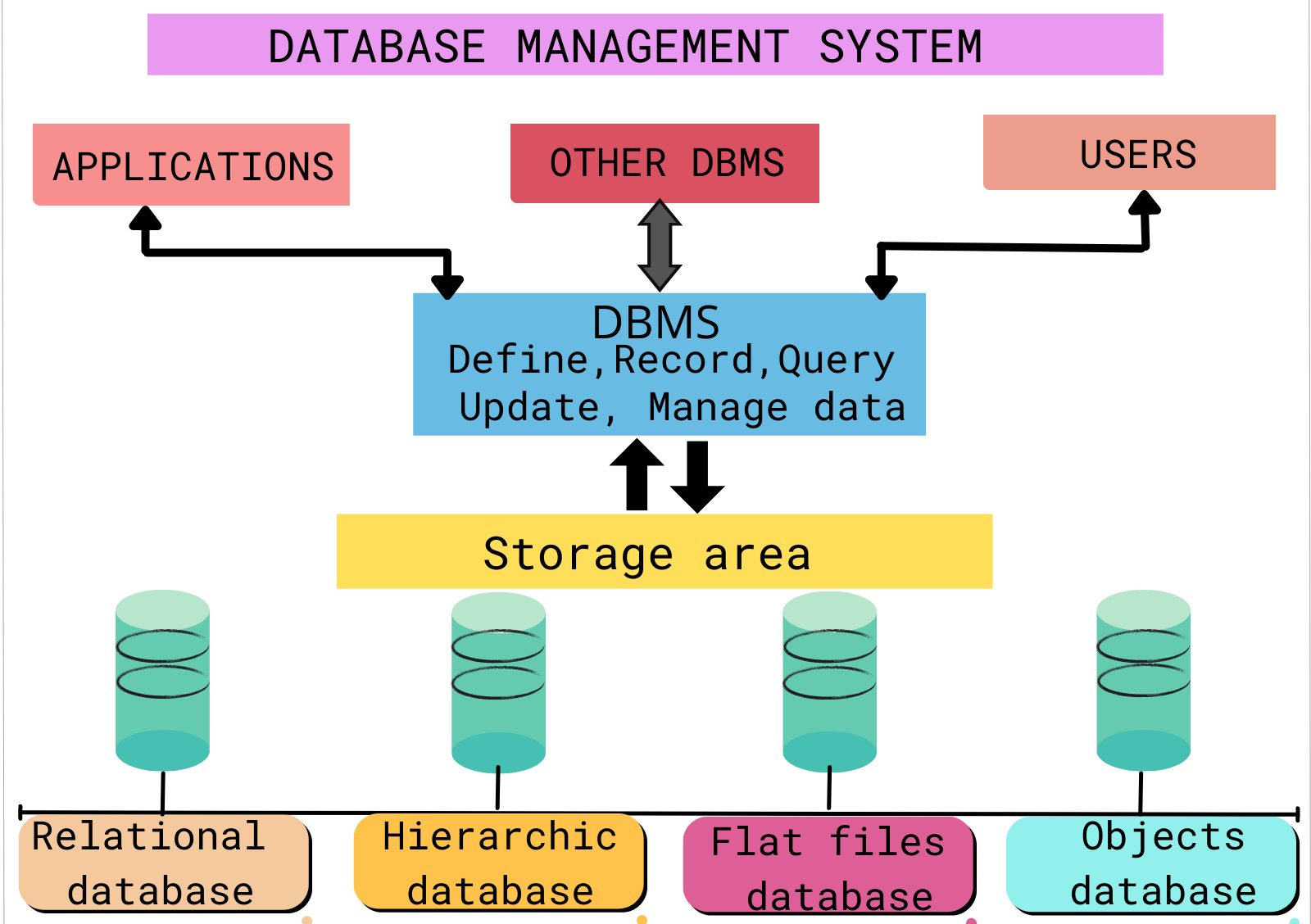
A Database Management System (DBMS) is software that interacts with the user, applications, and the database itself to capture and analyze data. It provides tools to store, modify, and extract information from a database.
📂 Types of Databases
- Hierarchical Database
- Network Database
- Relational Database (RDBMS)
- Object-Oriented Database
- NoSQL Database
🛠️ Components of DBMS
- Hardware
- Software
- Data
- Database Access Language (SQL)
- Procedures
- Database Users
👥 Types of DBMS Users
- Database Administrators (DBA)
- Database Designers
- End Users (Casual, Naive, Sophisticated)
- Application Programmers
🧱 DBMS Architecture
- 1-Tier Architecture
- 2-Tier Architecture
- 3-Tier Architecture
🧩 Data Models
- Hierarchical Model
- Network Model
- Relational Model (Most popular)
- Entity-Relationship Model (ER Model)
- Object-Based Model
🔗 Relational Model Concepts
- Tables (Relations)
- Tuples (Rows)
- Attributes (Columns)
- Schema & Keys (Primary, Foreign, Candidate, Super Key)
✏️ Entity-Relationship (ER) Model
- Entities and Attributes
- Relationships
- ER Diagrams
- Mapping ER Model to Relational Model
📋 Normalization
Process of minimizing redundancy and dependency.
Normal Forms:
- 1NF (First Normal Form)
- 2NF (Second Normal Form)
- 3NF (Third Normal Form)
- BCNF (Boyce-Codd Normal Form)
- 4NF, 5NF (Advanced)
🧮 Structured Query Language (SQL)
🔹 Data Definition Language (DDL)
CREATE,ALTER,DROP
🔹 Data Manipulation Language (DML)
INSERT,UPDATE,DELETE,SELECT
🔹 Data Control Language (DCL)
GRANT,REVOKE
🔹 Transaction Control Language (TCL)
COMMIT,ROLLBACK,SAVEPOINT
🔒 Transactions and Concurrency Control
- ACID Properties (Atomicity, Consistency, Isolation, Durability)
- Schedules: Serial, Non-Serial
- Concurrency Control Techniques:
- Lock-Based
- Timestamp-Based
- Two-Phase Locking (2PL)
💥 Database Recovery
- Log-Based Recovery
- Shadow Paging
- Checkpoints
📦 Storage and File Structure
- Data Storage on Disk
- Indexing (B+ Tree, Hash Index)
- RAID Levels
🔐 Database Security
- Authentication & Authorization
- Encryption
- SQL Injection Prevention
🧪 Popular DBMS Software
- MySQL
- PostgreSQL
- Oracle
- SQL Server
- MongoDB (NoSQL)
📊 NoSQL Overview (Non-Relational DBMS)
- Types: Document, Key-Value, Column, Graph
- Popular NoSQL DBs: MongoDB, Cassandra, Redis, Neo4j
🧠 Advanced Topics
- Distributed Databases
- Data Warehousing
- OLAP vs OLTP
- Cloud Databases
- Big Data and DBMS
📚 Learning Resources
Websites:
- w3schools SQL
- GeeksforGeeks DBMS
- TutorialsPoint DBMS
Books:
- Database System Concepts by Silberschatz, Korth
- Fundamentals of Database Systems by Elmasri & Navathe
📌 Final Tips
- Practice SQL queries regularly.
- Design ER Diagrams for sample databases.
- Understand how real-world apps use DBMS (e.g., e-commerce, banking).
- Explore both RDBMS and NoSQL technologies.
Would you like a PDF version of this guide or a breakdown into individual lessons or topics?
Tags: Computer Science Tutorials (B.Sc - B.Tech - MCA)Database Management System Tutorial for Beginners
Category: Career Course, DBMS Tutorial
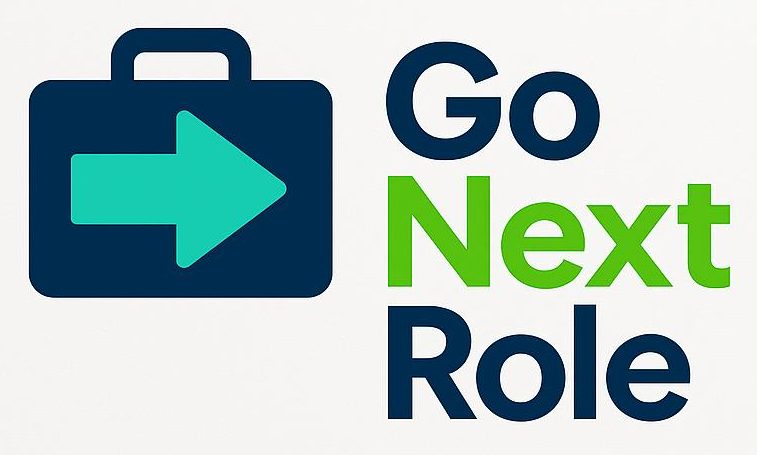
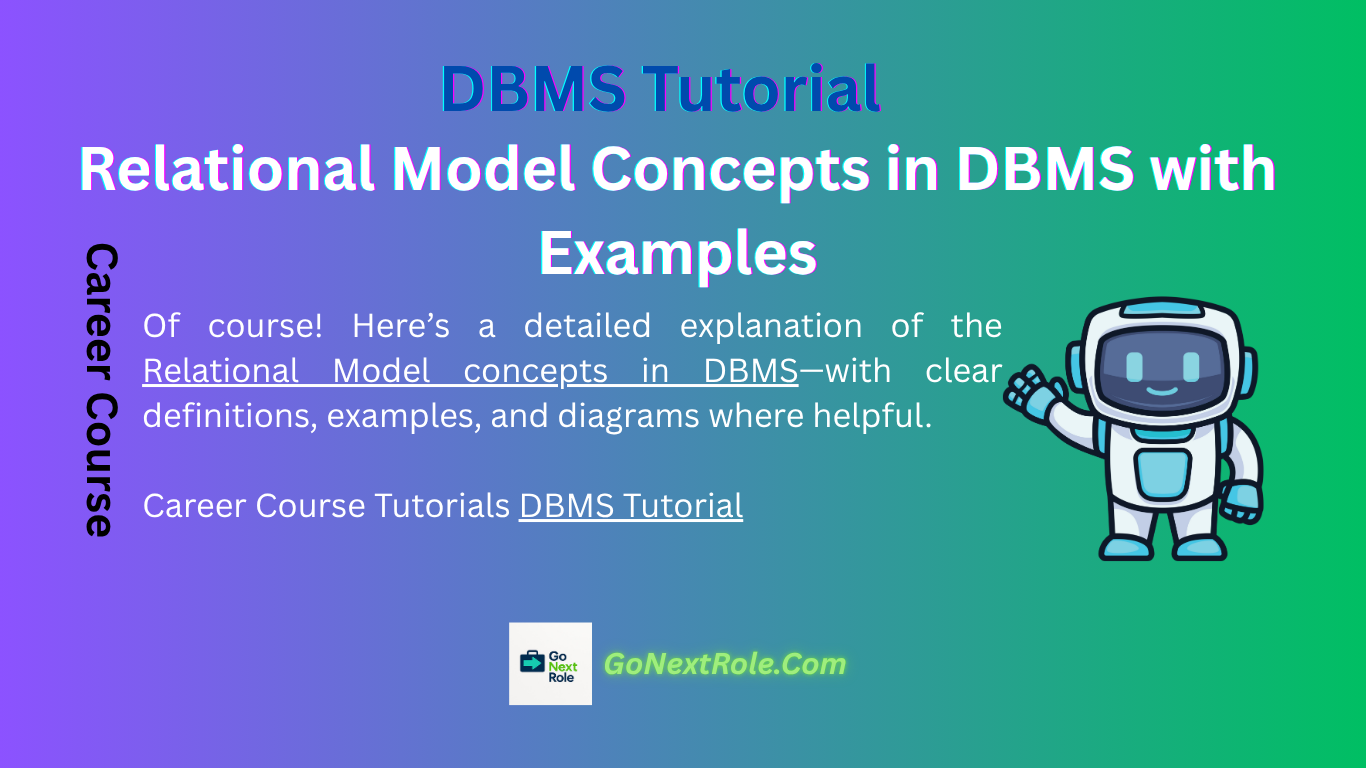
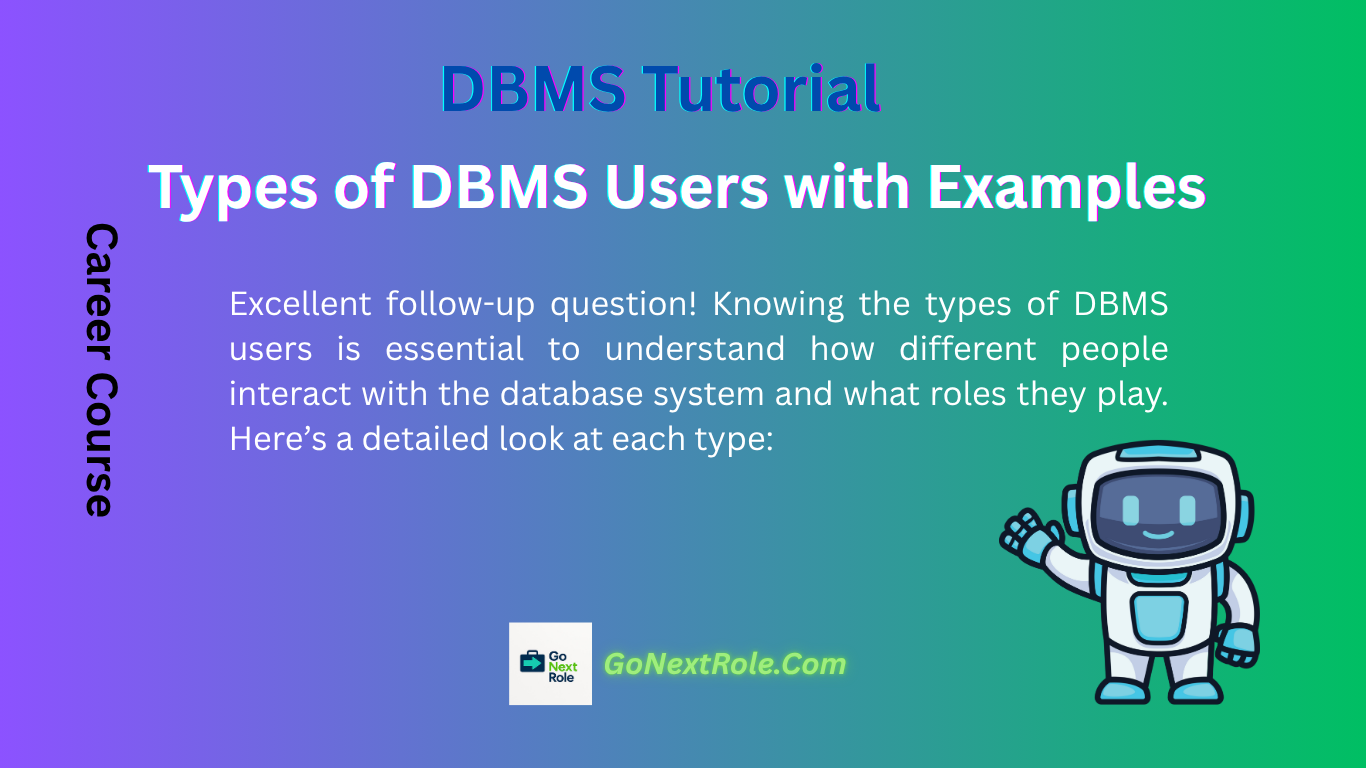
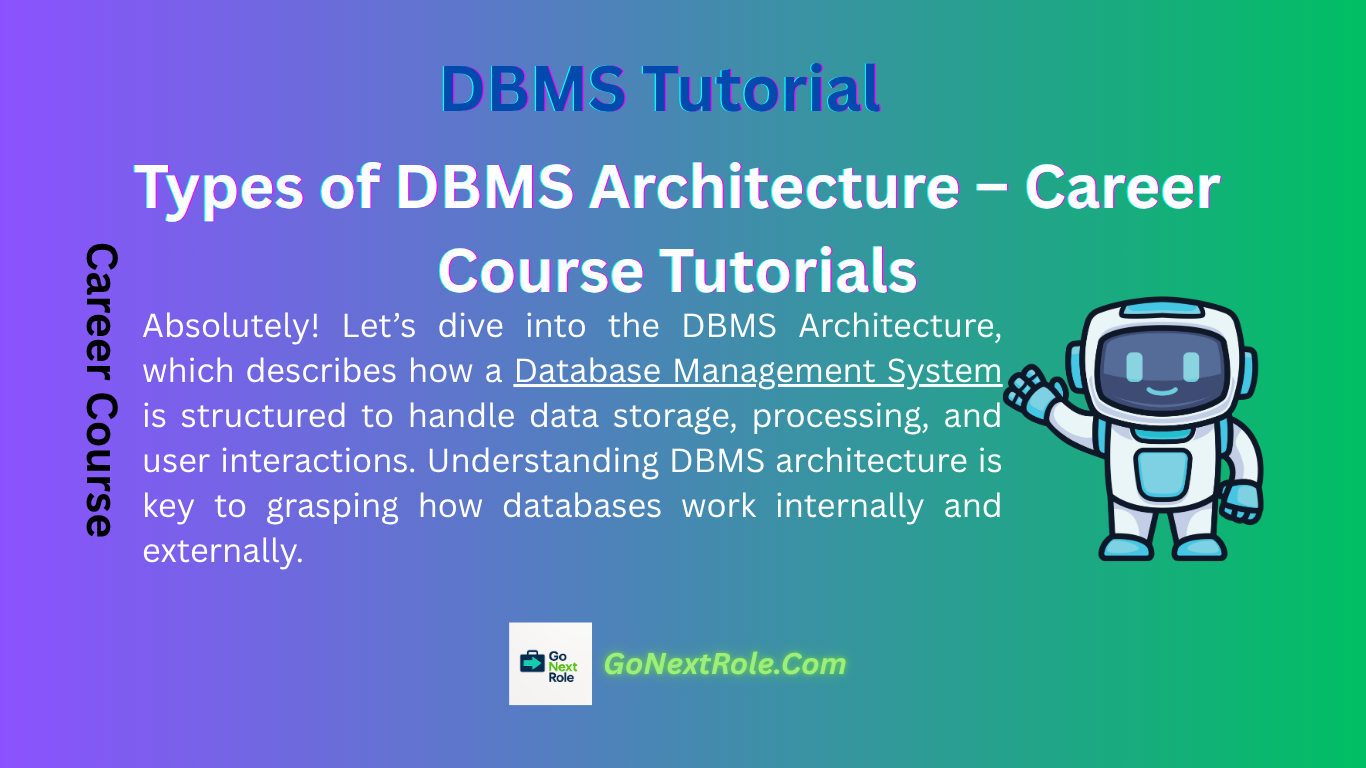
One Reply to “DBMS (Database Management System) Tutorial”